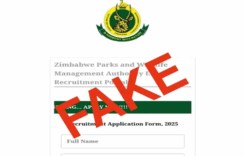A rise in cases of mpox (previously known as monkeypox) in the Democratic Republic of Congo (DRC) and several African countries has prompted the World Health Organisation to declare the outbreak as a public health emergency of international concern (PHEIC).
WHO Director-General Tedros Adhanom Ghebreyesus, said in his declaration: “The emergence of a new clade of mpox, its rapid spread in eastern DRC, and the reporting of cases in several neighbouring countries are very worrying. On top of outbreaks of other mpox clades in DRC and other countries in Africa, it’s clear that a coordinated international response is needed to stop these outbreaks and save lives.”
Similarly, the Africa Centre for Disease Control and Prevention (Africa CDC) declared the ongoing monkey pox outbreak a Public Health Emergency of Continental Security (PHECS) on August 13, 2024. This marks the first such declaration by the agency since its inception in 2017.
What is the current situation?
According to Africa CDC, Atleast 13 African countries, including previously unaffected nations like Burundi, Kenya, Rwanda, and Uganda, have reported monkey pox outbreaks recording 2,863 cases and 517 deaths in 2024, primarily in the Democratic Republic of the Congo (DRC).
Suspected cases across the continent have surged past 17,000, a significant increase from 7,146 cases recorded in 2022 and 14,957 cases in 2023.
Although no cases have been recorded in Zimbabwe yet, health authorities say they are on high alert in response to the current outbreak.
What you need to know about monkey pox
According to the World Health Organisation (WHO), monkeypox is a viral zoonosis (a virus transmitted to humans from animals) with symptoms similar to those seen in the past in smallpox patients, although clinically less severe. It has been classified as a disease of global public health importance, as the risk has spread around the world.
Human monkeypox was first identified in humans in 1970 in the Democratic Republic of the Congo in a region where smallpox had been eliminated in 1968.
The disease is usually mild, although severe illness and death can occur. Mortality rates of 3.6% for the West African variant and 10.6% for the Central African variant have been reported in endemic regions.
How does it spread?
- Through close bodily contact.
- A strain of mpox (Clade 1b) has been spreading mainly through sexual networks.
- Transmission can also occur via the placenta from mother to fetus (which can lead to congenital monkeypox) or during close contact during and after birth.
The virus enters the body through:
- Broken skin (even if not visible)
- Respiratory tract
- Mucous membranes (eyes, nose or mouth)
Prevention
- Avoid close contact with infected persons or animals
- Infected animals should be isolated from other animals and placed in immediate quarantine.
- Use protective equipment when caring for suspected patients
Symptoms
Fever, headache, muscle aches, backache, swollen lymph nodes, chills and exhaustion. A rash can develop, often beginning on the face, then spreading to other parts of the body including the genitals. The rash changes and goes through different stages. Initially, it can be a fluid-filled blistering rash that resembles chickenpox or syphilis, before finally forming a scab that later falls off. Most people recover from monkeypox in a few weeks without treatment.
Treatment
Currently, there is no proven treatment for monkeypox. However, vaccination against smallpox was demonstrated through several observational studies to be about 85% effective in preventing monkeypox.
Sources
Africa CDC
Center for Infectious Disease Research and Policy
World Health Organisation
Ministry of Health and Child Care
Related content
Do you want to use our content? Click Here












